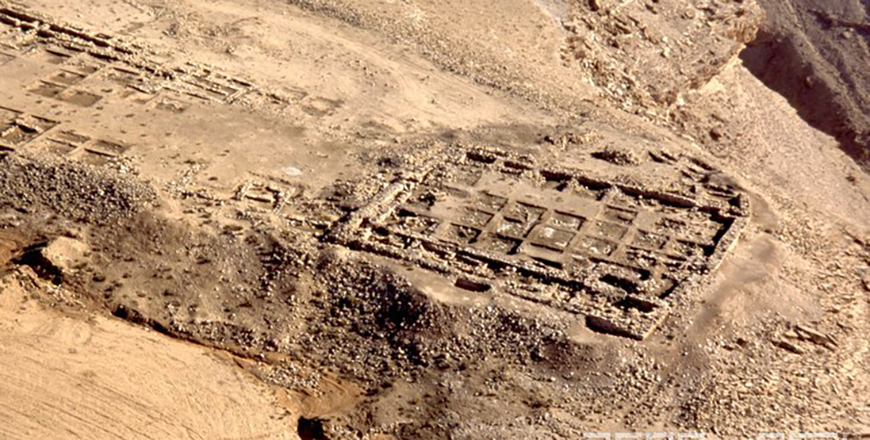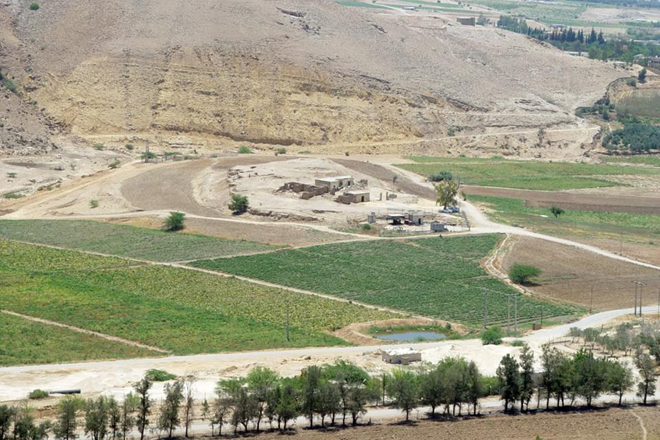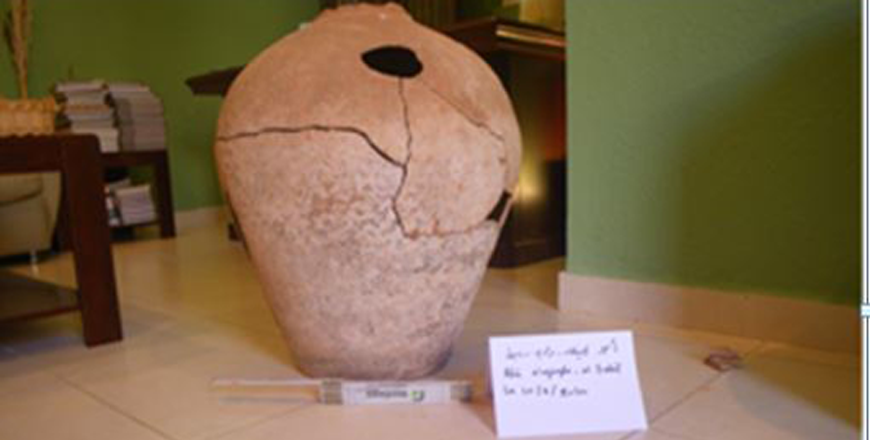You are here
Khirbet Al Lehun excavations reveal Iron Age village, fortress
By Saeb Rawashdeh - Feb 16,2025 - Last updated at Feb 16,2025

Lehun, the multi-period site on the edge of Wadi Mujib (Photo courtesy of ACOR)
AMMAN — Khirbet Al Lehun is located in the central Jordanian massive, north of Wadi Mujib. The Belgium archaeological team was active between 1978 and 2000, excavating a walled Iron I village with a later (possibly Iron Age II) fortress.
The pottery of area D was studied in Leiden as part of a larger programme, analysing the Iron Age pottery of Moab.
“The plateau between the Wadi Mujib [ancient Arnon] in the south and the Wadi Wala / Wadi Thamad in the north is considered to be the heartland of ancient Moab,” said Margreet Steiner who received her PhD in archaeology from Leiden University.
Steiner added that Lehun is a large site of 1,100 metres by 600 metres and is divided in different natural sectors.
Prehistoric flints were found, an Early Bronze fortified town in area C1, and a walled Iron Age I village with a later (possibly Iron Age II) square fortress in area D.
Traces were also found of the Nabataean and Roman occupation as well as remains from the Islamic period, Steiner continued, adding that the excavation of Area D started in 1980 with the opening up of several trenches inside the square fortress.
The pottery found by the archaeological team comes from houses of the Iron I village. This village, provisionally dated by the excavators to the 12th and 11th centuries BC, is enclosed by a precinct wall surrounding an elliptical area of 17,000 sq m.
The settlement was also characterised by a peripheral belt of houses along the protection wall and a large central open space, partially filled in with houses. A total of twenty-four structures were completely or partly excavated.
“Additional structures were located below the square fortress but these could not be adequately examined. Only four houses were excavated down to bedrock: houses 1, 2, 11 and 12. Of the others only the outlines were uncovered and some rooms excavated,” Steiner explained, noting that the pottery excavated in the village is a mixed lot.
According to a scholar, there are some (restored) complete pots, large vessel fragments, smaller fragments and very small pieces.
As the precise layer in which the pottery fragments were found was not noted during the excavation, it is assumed here that the large fragments and complete pots were retrieved from the floors and occupation layers in the houses and the courtyards, and from the roofs.
Smaller fragments may have been excavated from the later debris and wash layers which covered the ruins.
“However, one should not assume that all pottery in use during the occupation of the settlement has been retrieved. Most of the pottery found inside the houses was very heavy: Large kraters, storage jars and larger bowls," Steiner said.
"It is worth noticing that only very few small finds were found in the village: some flints, stone pounders, a bronze needle, several spindle whorls made of stone and bone, a bronze arrowhead, a bronze dagger, a fragment of a cosmetic palette and a scarab seal ,” Steiner elaborated.
The professor noted that the combination of the presence of mostly large vessels and the virtual absence of small finds seems to indicate that the inhabitants have left the settlement peacefully.
They took most of their belongings with them and left behind only what was too heavy to carry: Large and heavy vessels, together with heavy stone tools as grinders and pestles, and unmovable objects as bread ovens and troughs.
No traces were found of a sudden destruction by enemies or earthquakes. Some door openings were found blocked with heavy stones, so the inhabitants were probably expecting to come back at some point.
“The pottery repertoire of the Iron I village of Lehun shows several interesting characteristics. The large vessels [storage jars and large kraters and bowls] were turned on a slowly-rotating potter’s wheel, and smaller vessels were thrown on a faster wheel. The bases of cooking pots were mould-made, while the upper parts were thrown,” said Steiner.
The professor pointed out that several fabrics were used, one for cooking pots, one for large kraters, and one for most other vessels.
The clays used for these fabrics come from deposits in the Wadi Mujib or further away from the site. The Iron Age potters used different clays that the potters from the Early Bronze Age because they needed plastic clays from throwing, the scholar concluded.
Related Articles
AMMAN — Pella, an ancient site located approximately 100 kilometres northwest from Amman, was discovered in 1818 by Charles Irby and James M
Activities of the ancient inhabitants of the Jordan Valley near the site of Tell Himmah (around 2.5 kilometres east of Tell Dayr’Alla) have
AMMAN — Wadi Rum is a desert on the southern part of Jordan also known the Valley of Moon.

Opinion
Feb 19, 2025
- Popular
- Rated
- Commented
Feb 19, 2025
Feb 18, 2025
Feb 19, 2025
Newsletter
Get top stories and blog posts emailed to you each day.

















